I want to demonstrate the accuracy of my BMV-712 battery monitor.
Being a measuring instrument and one which is often positioned as THE source of Voltage and current measurements within complex ESS systems, it should really be quite good.
I've always had confidence in my older BMV-600 and now I have got myself a BMV-712 I thought I'd carry out some tests of my own to verify its accuracy.
First of all, it's best to consult the datasheet to find out how accurate the manufacturer claims the product to be.
https://www.victronenergy.com/upload/documents/Datasheet-BMV-712-Smart-EN.pdf
So, what we are looking for is an accuracy of ±0.3% or better for Volts and ±0.4% or better for Amps.
I'm going to use a small 12V setup for my tests. I am using my most accurate bench multimeters which I've recently checked with a transfer standard used against a recently calibrated meter at work.
I first check that all of the meters that I intend to use all agree with one another.
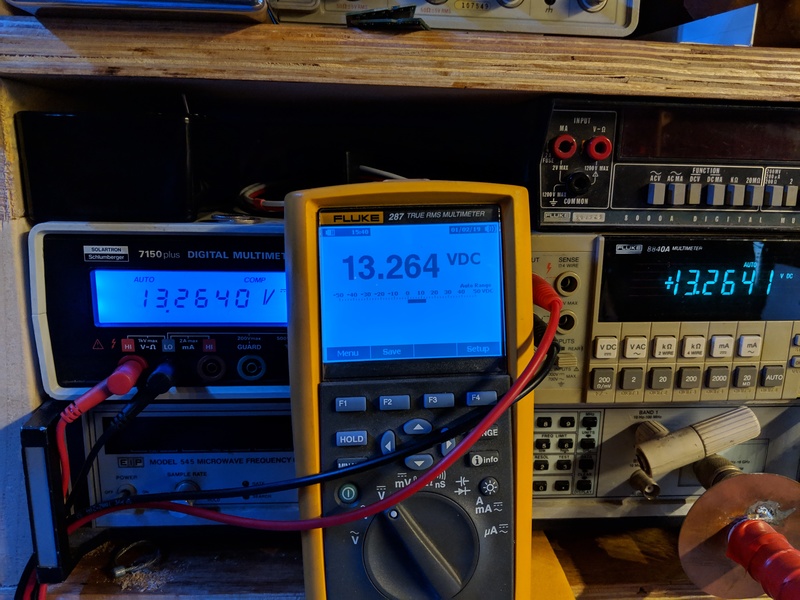
I have my Solartron 7150+, my Fluke 287 and my trusty old Fluke 8840A all in agreement with one another. They are all connected at the same point on the battery that the BMV-712's measurement points are.
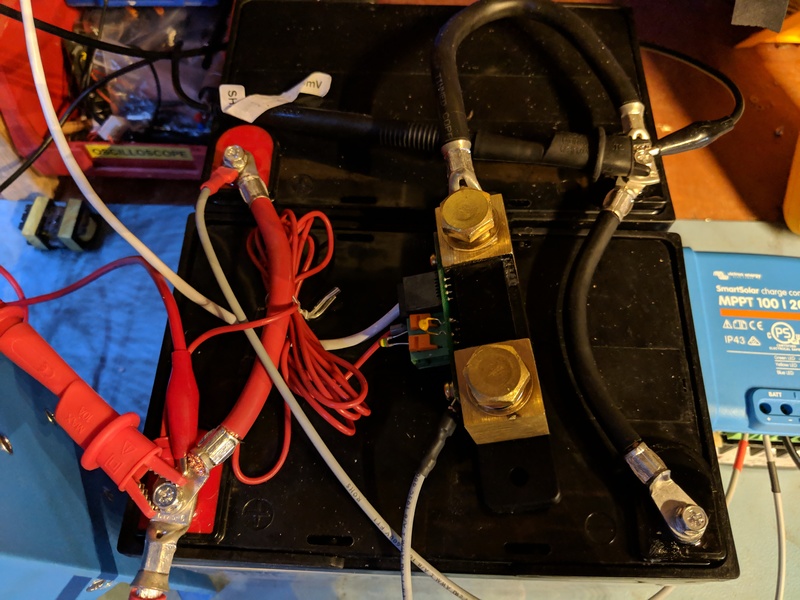
There is an MPPT charge controller connected, but I turn it off when taking measurements.
So here it is measuring the actual battery Voltage along with the two bench multimeters. It's spot on.
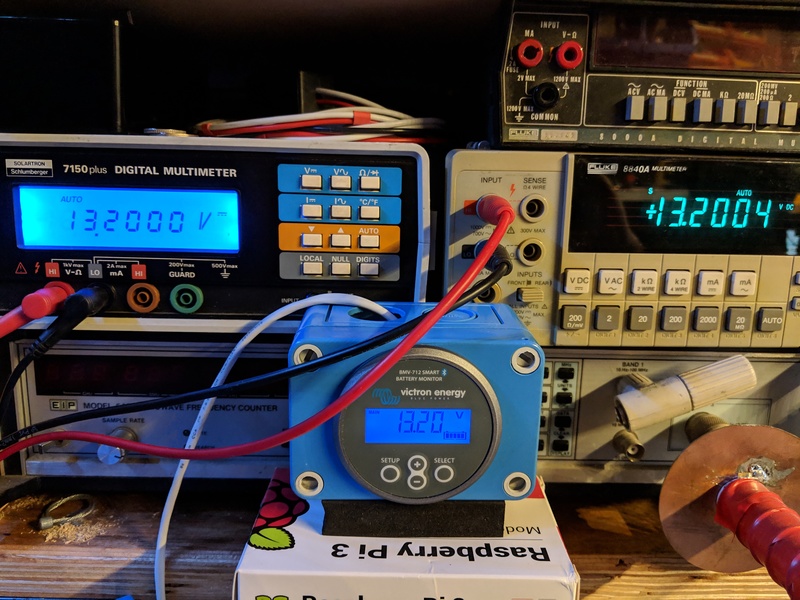
What about at the upper end of it's Voltage measurement range which is 70V.? I disconnected it from the battery and wired it up to my bench power supply. It's quite good there too. Only 9mV high which is 0.014% error, well within specifications.

OK, so the Voltage measurements look great. Let's get on with some Amps measurements.
Those two bench multimeters can measure current accurately, but they can only measure up to 2A. So I started taking low current measurements with the two bench meters strung in series and using some power resistors as loads.
I have a selection of various power resistors which I am using for these tests.
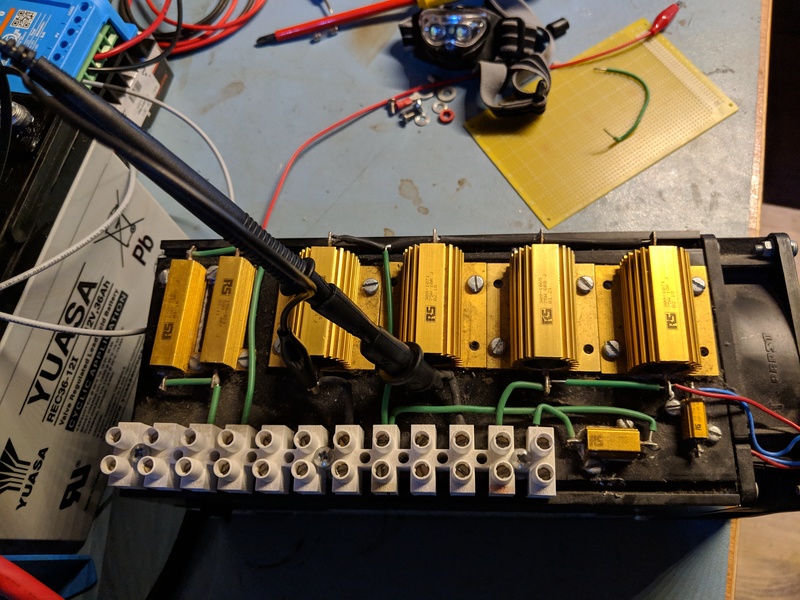
Let's start with some really low measurements in the milliamp range. It's a few mA off.
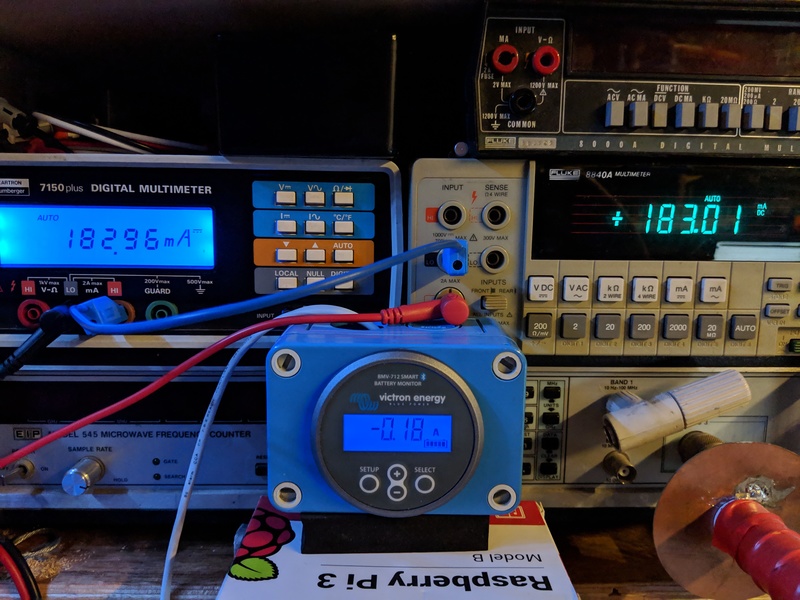
This is really at the bottom end of the scale and outside of the range of what this is really designed for. Remember it is measuring a few microvolts dropped over a 500A shunt, so if you do require finer resolution then you should use a higher resistance shunt for lower current measurements. Something a like a 100A / 50mV shunt would give you better precision and accuracy.
Right let's see how it performs at higher current. With 1.68A, it's well within specification. My bench meters are still sensitive enough to pick up the 3mA error from before, but at 1.6A its pretty much obscured.

Lets get closer to 10A. I can no longer use the bench multimeters. As I said before they are only good up to 2A then fuses start opening up. So I'm going to switch to the Fluke 287 which is OK up to 10A.
No problems to be seen here.
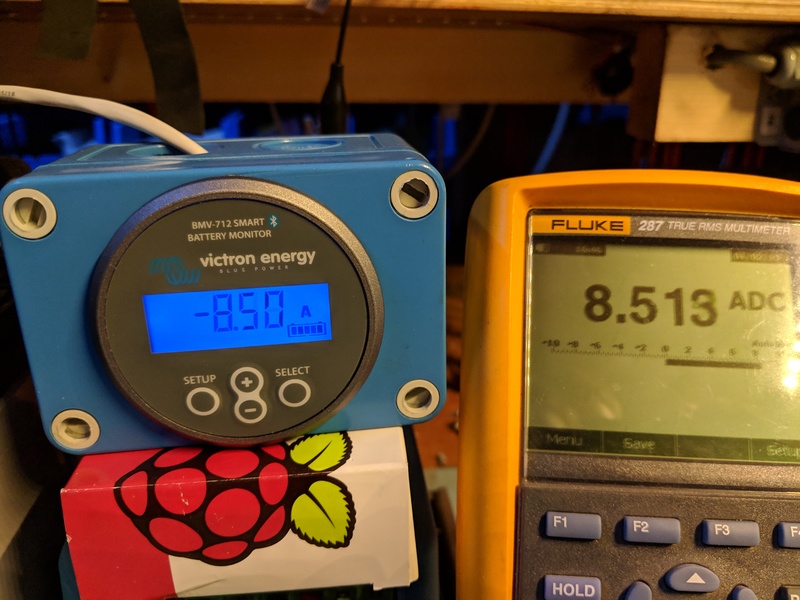
I'd like to go up to 100A, but for that I'd have to use a clamp meter. I have a Fluke i410 DC clamp meter which is quite good, but clamp meters are not for making accurate measurements so this is more for fun than anything else. I really cannot claim any accuracy figures from now on because of the equipment that I am using.
The setup for this has to be changed. To get high current I have enlisted my trusty old VE.9bit MultiPlus to the task. It's 12V 2KVA, so I shouldn't have much trouble getting it to make 100A flow. I have a variac transformer on the output of the MultiPlus so that I can control the current. I have a crusty old kettle from out of my garage on the output of the variac in which to dump the energy.
Here is the setup.

The i410 clamp meter is connected to the 8840A. 1A of current reads out as 1mV on the meter. So whatever number you see on the 8840A can be directly translated to Amps.
Here we go. 10A
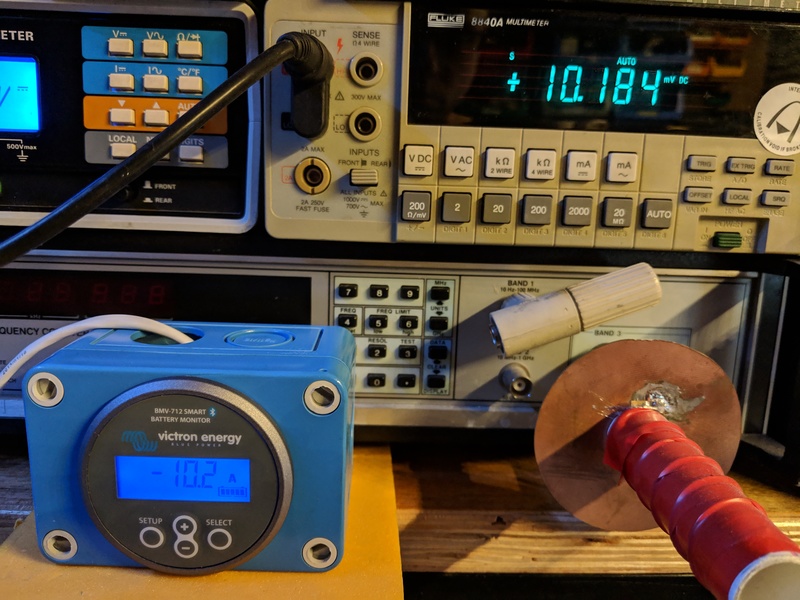
25A

Now up to 100A. It's worth mentioning that my battery bank is tiny and so are my DC cables going in to the MultiPlus. However, the cables are really short and I am holding this current for a couple of seconds.
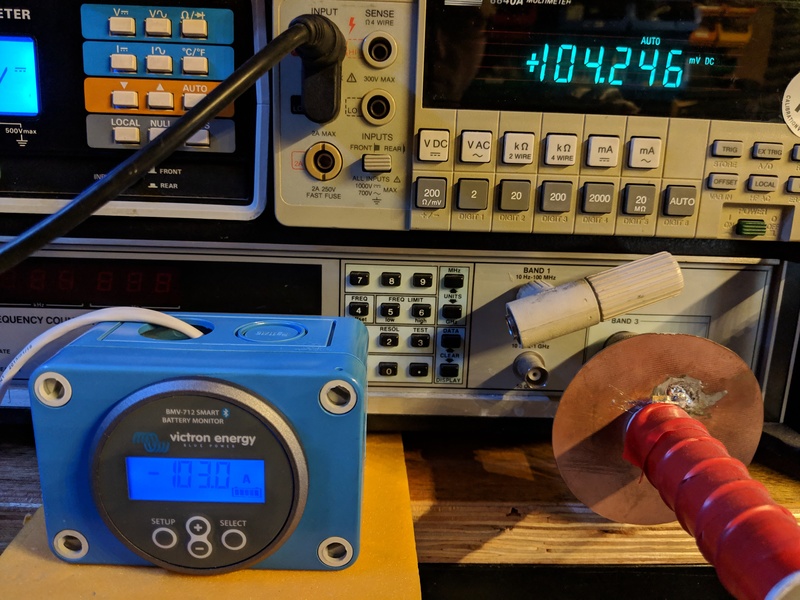
I let myself get a little bit carried away and pushed it a bit further, but I dared not go much more than 150A.

So there you have it. I'm certainly pleased with my BMV-712.
When I initially started scrutinizing my BMV-712 I noticed that it was measuring about 20mV low on the Voltage measurement. I found this missing 20mV across the red wire between the battery + and the shunt. I had a 100mA fuse in the fuse holder of my red wire. This fuse is 6Ω which means that the ~4mA draw of the BMV it's self (with the backlight on) equates to ~24mV drop across the fuse.
I changed my fuse to 1A which means that only 400μV is lost over the fuse. A 1A fuse will still adequately protect the red wire.
